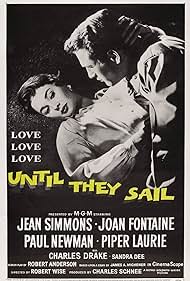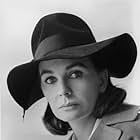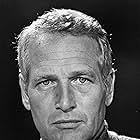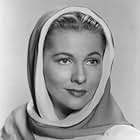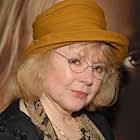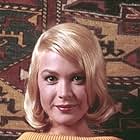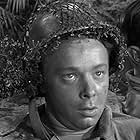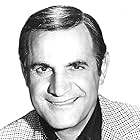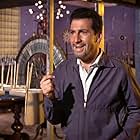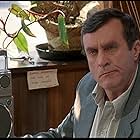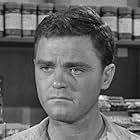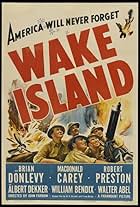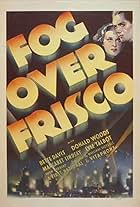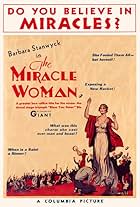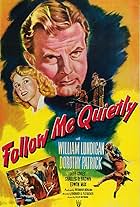IMDb RATING
6.5/10
1.7K
YOUR RATING
During WWII, unmarried New Zealand women meet and marry American soldiers who are fighting in the Pacific theater.During WWII, unmarried New Zealand women meet and marry American soldiers who are fighting in the Pacific theater.During WWII, unmarried New Zealand women meet and marry American soldiers who are fighting in the Pacific theater.
- Awards
- 1 win
Patrick Macnee
- Pvt. Duff
- (scenes deleted)
Nicky Blair
- US Marine
- (uncredited)
William Boyett
- US Marine
- (uncredited)
- Director
- Writers
- All cast & crew
- Production, box office & more at IMDbPro
Storyline
Did you know
- TriviaAspen Pictures, owned by Mark Robson and Robert Wise, bought two stories from James A. Michener's anthology "Return to Paradise." After Robson filmed one of the stories as Return to Paradise (1953) with Gary Cooper, they ran out of funding and had to sell the rights to the other story, "Until They Sail" to Burt Lancaster. Although the two films' plots differ greatly, some modern sources attribute Until They Sail (1957) as a remake of the earlier film, also set in World War II South Pacific. Some years later, it ended up with Charles Schnee at MGM. At one time, MGM wanted Glenn Ford for lead Marine. Later, Wise was at Metro and he asked to film the property as his last film of his contract with the studio.
- GoofsAt the start of the film, set in 1939, the four sisters put up a map of the world to keep track of the soldiers' locations, but the map is contemporary from the year the film was made (1957), showing numerous nations that did not exist in 1939, for example: Laos, Cambodia and Vietnam (which would have been French Indochina in 1939), Indonesia (formerly the Dutch East Indies), Thailand (called Siam in 1939), and Pakistan (which was part of British India), among other countries.
- Quotes
Barbara Leslie Forbes: [Last lines] If my father could read the history of his daughters...
Capt. Jack Harding: He'd understand.
Barbara Leslie Forbes: As they say, to understand is to forgive. Or is it, to understand is not to forgive? I can never remember.
- ConnectionsReferences Mutiny on the Bounty (1935)
Featured review
Until They Sail (1957)
In some ways this is a terrific movie about women at home as their soldier men fought in World War II. The setting is New Zealand, and the women are four sisters there. The men are mostly American soldiers, seen not as invaders but still as aliens who are not quite welcome, The filming in wide screen (Cinemascope, really wide) black and white is fabulous. And the acting, including key roles by Paul Newman and Jean Simmons, is great.
There isn't a stick of actual fighting here, if you want that kind of movie. Instead it's an interwoven tale of women trying to survive lost husbands in the war, and finding love, or not, in the mixed up world of war time New Zealand.
It's an interesting cast, with three women and one man (Paul Newman) as the top four billings. And a story by James Michener, with photography by Joseph Ruttenberg. Sounds like a winner, especially as the director (with MGM) was the soon to be legendary Robert Wise.
The scene is New Zealand during WWII. And it has to be added that Joan Fontaine and Jean Simmons are both first rate actresses (and Sandra Dee is getting a breakout role), all playing young women left behind by the men called to war. It's filmed in a kind of somber, clear-eye black and white, very emphatic and straight forward. It's what Paul Newman insisted was a "woman's picture," and in fact it really is about the four sisters and their varying interests in men.
Jean Simmons shines far more than the famed Joan Fontaine, and she is the counterpart for Paul Newman, who is the point man for the American presence (and the introduction to American men). The writing is a bit stiff and the editing sometimes slow, as if the nuances of fairly mundane reactions and intentions are worth lingering over. They aren't, not always. If you make it beyond the long long establishing scenes, you'll eventually get sucked in. I'm a huge fan of Simmons, who seems undeniable in any role and not just for some kind of cover girl beaiuty, and so I loved her scenes, which are numerous.
And yet, even if this movie seems to follow some ordinary romantic path, you can't help but feel, individually, for the four women wanting to not be alone. (It has some echo of "Little Women," to me.) That's the reason to hang in there. It takes time to get invested in the characters and their needs. Paul Newman is very good as usual, but more restrained than you might expect. Handsome, but without some kind of edge that made him bigger than life.
This strikes me as a drama, not a war film but about a human problem that happens to have some soldiers in it. It's not all great stuff-some of the writing is filler, or a bit dumbed down-but the best of it is felt and honest, and it's all seen (filmed) with classic beauty. The interwoven series of relationships with several women and several men has a weird echo of the earlier "The Best Years of Their Lives," and that's a good thing (and Ruttenberg holds his own against Gregg Toland in that parallel). In fact, the photography in black and white Cinemascope (anamorphic wide screen) is really special, for those who notice such things.
This is pure Hollywood, shot on an MGM lot (and studio). But it does to show how the "old" method worked so well. So, I loved this more than many of you will because of it's moviemaking aspects. It will get patient at times, but we all have to make time sometimes. As these women learned, too, without any choice.
In some ways this is a terrific movie about women at home as their soldier men fought in World War II. The setting is New Zealand, and the women are four sisters there. The men are mostly American soldiers, seen not as invaders but still as aliens who are not quite welcome, The filming in wide screen (Cinemascope, really wide) black and white is fabulous. And the acting, including key roles by Paul Newman and Jean Simmons, is great.
There isn't a stick of actual fighting here, if you want that kind of movie. Instead it's an interwoven tale of women trying to survive lost husbands in the war, and finding love, or not, in the mixed up world of war time New Zealand.
It's an interesting cast, with three women and one man (Paul Newman) as the top four billings. And a story by James Michener, with photography by Joseph Ruttenberg. Sounds like a winner, especially as the director (with MGM) was the soon to be legendary Robert Wise.
The scene is New Zealand during WWII. And it has to be added that Joan Fontaine and Jean Simmons are both first rate actresses (and Sandra Dee is getting a breakout role), all playing young women left behind by the men called to war. It's filmed in a kind of somber, clear-eye black and white, very emphatic and straight forward. It's what Paul Newman insisted was a "woman's picture," and in fact it really is about the four sisters and their varying interests in men.
Jean Simmons shines far more than the famed Joan Fontaine, and she is the counterpart for Paul Newman, who is the point man for the American presence (and the introduction to American men). The writing is a bit stiff and the editing sometimes slow, as if the nuances of fairly mundane reactions and intentions are worth lingering over. They aren't, not always. If you make it beyond the long long establishing scenes, you'll eventually get sucked in. I'm a huge fan of Simmons, who seems undeniable in any role and not just for some kind of cover girl beaiuty, and so I loved her scenes, which are numerous.
And yet, even if this movie seems to follow some ordinary romantic path, you can't help but feel, individually, for the four women wanting to not be alone. (It has some echo of "Little Women," to me.) That's the reason to hang in there. It takes time to get invested in the characters and their needs. Paul Newman is very good as usual, but more restrained than you might expect. Handsome, but without some kind of edge that made him bigger than life.
This strikes me as a drama, not a war film but about a human problem that happens to have some soldiers in it. It's not all great stuff-some of the writing is filler, or a bit dumbed down-but the best of it is felt and honest, and it's all seen (filmed) with classic beauty. The interwoven series of relationships with several women and several men has a weird echo of the earlier "The Best Years of Their Lives," and that's a good thing (and Ruttenberg holds his own against Gregg Toland in that parallel). In fact, the photography in black and white Cinemascope (anamorphic wide screen) is really special, for those who notice such things.
This is pure Hollywood, shot on an MGM lot (and studio). But it does to show how the "old" method worked so well. So, I loved this more than many of you will because of it's moviemaking aspects. It will get patient at times, but we all have to make time sometimes. As these women learned, too, without any choice.
- secondtake
- Oct 12, 2014
- Permalink
Details
Box office
- Budget
- $1,841,000 (estimated)
- Runtime1 hour 34 minutes
- Color
- Sound mix
- Aspect ratio
- 2.35 : 1
Contribute to this page
Suggest an edit or add missing content

